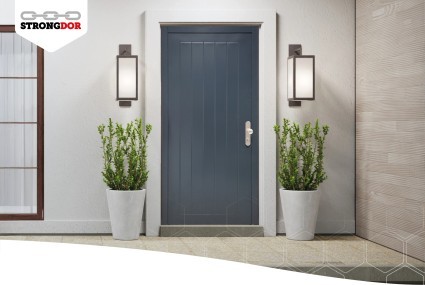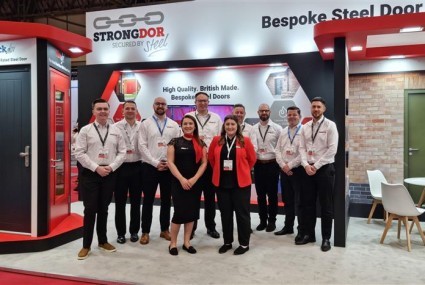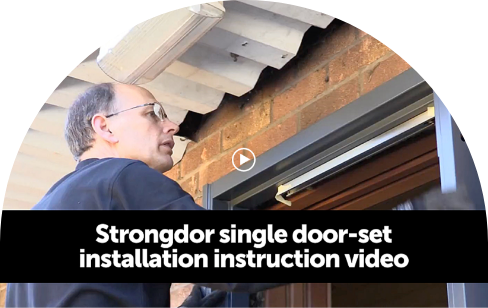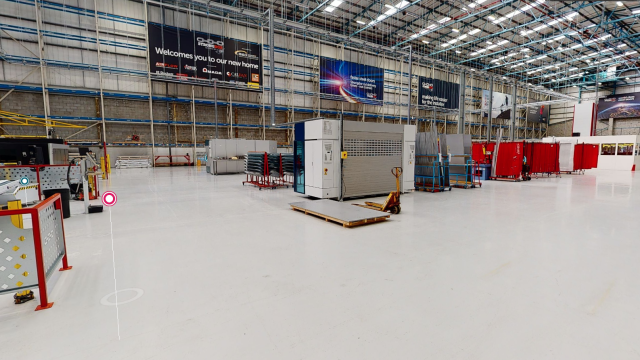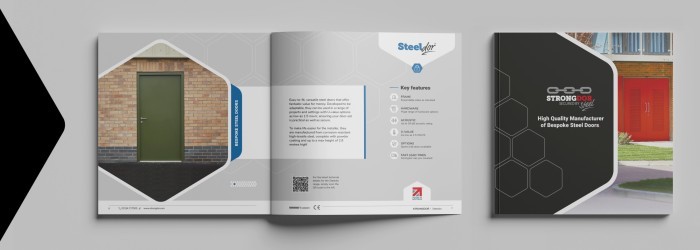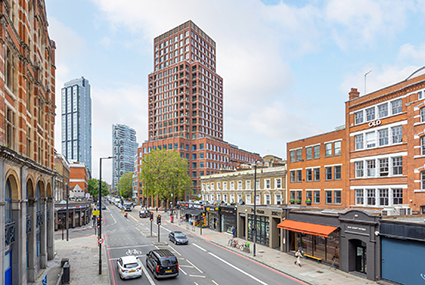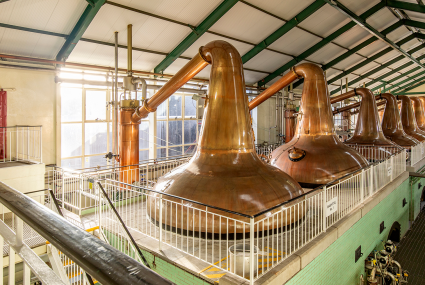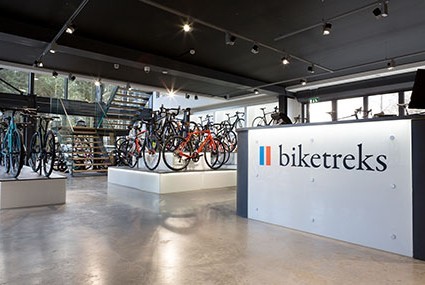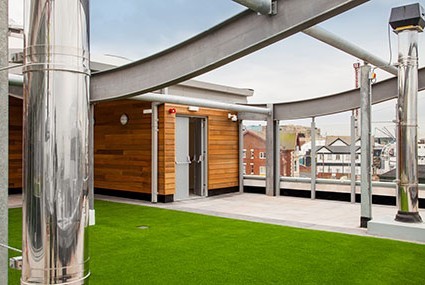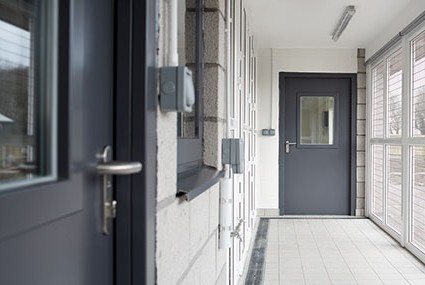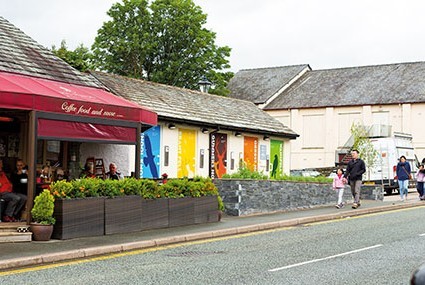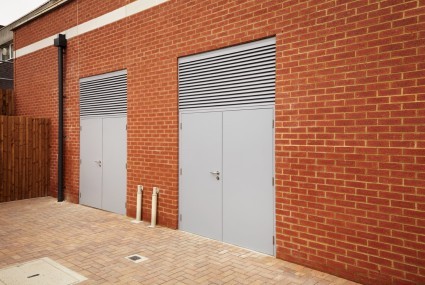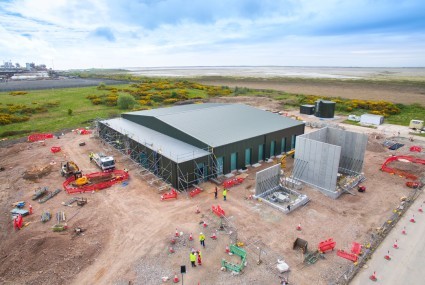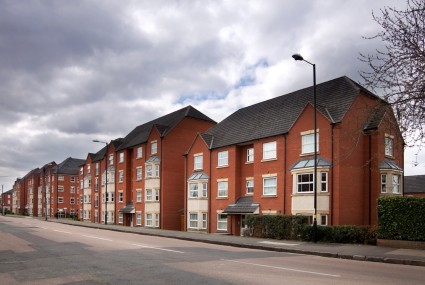What would you say are your top 5 tips when choosing a closer?
When considering my 5 top tips for selecting the right steel door closer – I’d always start with life safety, so firstly fire, then security and other performances.
- For fire door protection you need a door closer that’s been fire tested or third party certificated for use with the doorset you’re fitting. What I’ve noticed with Strongdor is the amount of fire testing they do and testing door closers with insulated and un-insulated steel doors. When testing uninsulated steel fire doors it’s critical to test the door closer on the unexposed non-fire side of the door leaf, this thoroughly tests the closer when subjected to heat transfer through the face of the door.
- Considering the power size required is next, factoring in the width and weight of the door to determine what power you need.
- Adjustment next. Fitters deserve as much adjustment as possible, so I recommend a power adjustable closer that gives ability to raise or lower the power without moving the fixing position on the door
- Durable valve adjustment – I learnt this from Strongdor in my early days visiting here. I remember asking, what pain points do installers have when adjusting door closers? Duncan Allen explained that a key factor is to have durable values. He went to to explain some door closers have an allen key type adjustment valve for the close and latch, which can round off when you make adjustments, which after a short time renders the door closer useless. So, look out for a door closer with a flat screw driver head that won’t wear.
- My last tip is to always ensure you consider the situation and user – would a delayed close or a back-check function help? From a situation point of view – ask yourself, Is the door opening outwards? Could the wind catch the door and it hit somebody? Is the door opening against a wall or expensive equipment? Are the users pushing trollies, less able or carrying heavy parcels?
What situation would you use a 5204 VS 9205 VS TS 9206 on our Steel Doors?
The fundamental difference is a 5204 is pressure casted aluminium and power 2-4, whereas 9205 and 9206 are an extruded aluminium body. Extruded makes for a more efficient and reliable closer which is shown in the extended length of mechanical guarantee. A lot of this decision is around the situation where the final door-set is being fitted. So early engagement between the Strongdor specification team and the surveyor makes for the right decision on door closers. Is this an external doorset or an internal doorset? You would use the TS.5204 on smaller lighter weight doors where there is less risk of wind factor and excessive air pressures – ideal for interior lower usage and protected environments. Remember when these rack and pinion closers are fitted on the push side or parallel arm in many cases they lose a power size. So an ‘open out’ door with closer fitted inside the building will be fitted push side of the door – therefore I recommend a larger power size such as the 9205 or 9206. If its an exposed site definitely the TS9206. What I like about the TS9206 is it’s ‘one closer does all’ power adjustable meaning the specifier can hardly get it wrong for any situation.
What should people consider when looking to comply with Part M directive?
If you’re talking about the door closer, complying with Part M (or Approved Document M) you need to look at the efficiency of the door closer. If it’s the overall doorset then you need to look at anything from door opening width through to threshold height and door handle design. But just focussing on the door closer - what you are trying to do is meet BS 8300 and BS EN 1154 – making a building accessible for all but also maintaining crucial fire safety. The door needs to be easy to open, but also strong enough to close, this takes a very efficient closer. This is worked out by measuring the Nm force required to open the door, divided by the closing force which gives a percentage efficiency. BS 8300 requires that opening a door from 0 to 30 degrees (from the closed-door position), a maximum of 30N pressure shall be required. From 30 to 60 degrees, the maximum force required shall be 22.5N. The measurements shall be taken at the leading edge of a door. However, where this not possible, they may be taken up to 60mm in from the edge and approximately in line vertically with the centre line of the door handle, and an additional 2N is permissible when measuring this way. A tolerance of 2-3N is acceptable on all readings. Therefore, total maximum force allowed for under BS 8300 is 35N (0-30°) and 27.5N (30-60°).
Are there any unique features in any of your closers?
A lot lot of the uniqueness is around easy fitting and easy adjustment. People say our closers are probably the most user friendly and one key point is the flat head screw valve adjustment. Transport For London, chose Rutland closers due to the narrow body projection meaning they could use it behind doors without affecting art deco listed underground stations. Spring clips in covers are a design to remove vibration noise as the doors close. A 5mm Allen key is provided with each closer which adjusts arm, power size and tightens the pinion bolt which is by design to reduce the number of tools for the fitter. Very few door closers have CE marking on delayed action. I think from our work with Strongdor a unique feature is the amount of fire testing Strongdor have undertaken.
What makes fire rated closers different?
The term ‘fire rated’ tends to link with certification, by that I mean third-party certification where a worst-case fire test or benchmark fire test will be performed. Following a test the certification body do a technical review and certificate the door closer as an FD30, FD60, FD90 fire rated door closer to go on specific door types such as MM, IMM, TT, ITT, ITC. These fire ratings are shown on a fire certificate. So to use your word ‘different’ it’s different because it’s been assessed by an independent UKAS approved certification body known as third-party certification. The closer may never have been tested on the door type before but it is allowed under the ‘fire rated’ certification scheme.
Then another way to look at fire rating is to do an actual fire test with the door closer on your fire doors, which is what Strongdor do, this primary fire testing then goes for technical review and can be used for UKCA and CE marked doorsets in the case of external fire doorsets.
What testing do your closers undergo?
There are 6 classifications for door closer testing. Our door closers are tested by UKAS accredited labs to the UK designated standard for door closers is BS EN 1154 – this standard is called “Building Hardware – Controlled door closing devices – Requirements and test methods”. It’s mandatory for both UKCA and CE marking of door closers and gives the classification coding system which is shown in 5 boxes in each door closer. The first box is category of use, which shows a grade for opening angle. The second box is for durability and only one grade 8 is acceptable and that’s 500,000 test cycles. The third digit is the power sizes. The fourth digit is suitability so a ‘0’ is not suitable for use fire/smoke doors but grade 1 is suitable for use on fire/smoke doors – this is determined by a separate test to BS EN 1634-1. Then the fifth digit is safety where only grade 1 is identified. Lastly the sixth digit is Corrosion resistance from no corrosion resistance to very high resistance.
Thank you to Neil from Rutland for taking the time to share his knowledge on steel door closers. If you have a project that requires steel doors or you still aren't sure which closer opinion would work best for you, simply request a quotation online or call the Strongdor steel door experts today, who can advise on the best option for your project,



